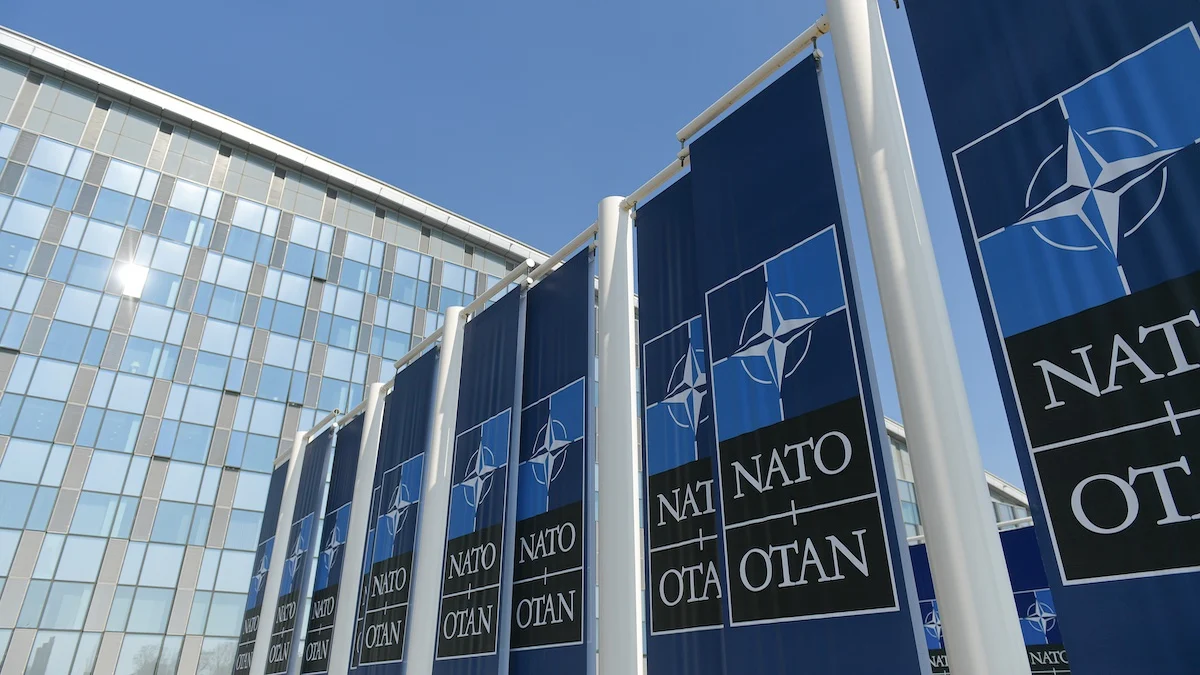Military Cyber Security: Threats and Solutions
In today’s digital age, the military has become increasingly reliant on advanced technologies to enhance its capabilities. However, this dependency also opens up new vulnerabilities to cyber threats. Military cyber security is now a crucial component of national defense, designed to protect sensitive systems, communications, and data from a wide range of cyberattacks. This article dives into the most pressing cyber threats faced by military organizations and outlines comprehensive solutions for maintaining secure defense systems.
You must see: Exploring GCHQ: Britain's Top Cyber-Intelligence Agency
Understanding Military Cyber Threats
Cyber threats in the military sphere range from espionage and sabotage to full-scale cyber warfare. These threats are not just theoretical; they are real, frequent, and sophisticated. With the advent of cyber warfare, military operations are exposed to attacks targeting not only IT infrastructure but also strategic defense mechanisms, communication networks, and even weaponry.
Key Military Cyber Threats
- EspionageNation-state actors often employ cyberattacks to steal classified information, such as military strategies, intelligence, and technological advancements. This covert form of cyber warfare can compromise national security without immediate detection.
- Sabotage and DisruptionAttackers may aim to disrupt military communications or sabotage critical infrastructure, such as radar systems, satellites, and defense control systems. Such disruptions could severely hamper a nation's defense during active conflict.
- Ransomware and MalwareCybercriminals increasingly deploy malware and ransomware to lock down military networks, often demanding exorbitant payments in exchange for the release of crucial systems. Ransomware in the military context can paralyze logistics, leaving armies vulnerable during critical moments.
- Supply Chain AttacksHackers may target the contractors and suppliers providing hardware and software to military forces. Compromising the supply chain can give adversaries backdoor access to military systems, enabling undetected infiltration.
- Critical Infrastructure AttacksCyber attackers often aim to cripple essential services such as power grids, water supply, and transportation networks that support military functions. Such an attack can have far-reaching consequences, including debilitating national defense capabilities.
Cybersecurity and Military Defense in an Increasingly Digital World
Types of Cyber Warfare and Their Impact on the Military
Cyber warfare is defined as the use of cyberattacks by one nation to harm or disrupt another. The objectives can range from espionage and sabotage to the full-scale incapacitation of military infrastructure. Let’s explore the primary types of cyber warfare threatening military cybersecurity:
1. Distributed Denial-of-Service (DDoS) Attacks
DDoS attacks overwhelm military servers with an excess of traffic, rendering critical communication channels and operational systems unusable. This could leave the military unable to respond effectively to external threats during an attack.
2. Advanced Persistent Threats (APTs)
APTs refer to sustained and stealthy attacks that aim to infiltrate military networks for long-term espionage. These attacks are particularly dangerous because they often go undetected for extended periods, allowing adversaries to gather valuable intelligence unnoticed.
3. Zero-Day Exploits
Zero-day attacks target previously unknown vulnerabilities within military software or hardware. Once exploited, they can allow attackers access to secure systems without triggering security alerts.
4. Cyber-Physical Attacks
Cyber-physical systems, such as drones, smart weapons, and autonomous vehicles, are susceptible to hacking. Cyber attackers may hijack these systems, causing catastrophic consequences in a military conflict.
You must see: Exploring GCHQ: Britain's Top Cyber-Intelligence Agency
Solutions for Military Cybersecurity
Given the growing frequency and sophistication of cyber threats, militaries around the globe are investing in enhanced cyber defense systems. The following are key solutions that can fortify military operations against cyberattacks:
1. Robust Encryption Standards
To safeguard sensitive military data, end-to-end encryption should be employed across communication channels, databases, and military devices. Military-grade encryption ensures that even if hackers intercept communications, they cannot decipher the data without proper authorization.
2. Multi-Factor Authentication (MFA)
Implementing multi-factor authentication for access to military systems adds an additional layer of security. MFA requires multiple verification steps, such as passwords, biometric scans, or physical tokens, before access is granted to critical systems.
Cyber W.A.R.
3. Artificial Intelligence and Machine Learning
AI and machine learning tools can be leveraged to detect anomalies and potential cyber threats in real time. These systems can rapidly analyze vast amounts of data to identify unusual patterns, allowing militaries to respond swiftly to cyberattacks before they cause damage.
4. Zero Trust Architecture
A zero-trust security model ensures that every entity, whether inside or outside the military network, is continuously verified before being granted access. This minimizes the risk of insider threats and unauthorized access.
5. Cybersecurity Training and Awareness
Educating military personnel on cybersecurity best practices is essential. Human error often opens the door to attacks, whether through phishing schemes or poor password management. Regular training on recognizing potential threats and maintaining secure practices can significantly reduce vulnerability.
6. Threat Intelligence Sharing
Global collaboration on threat intelligence allows military organizations to stay ahead of emerging threats. Countries can share information about recent cyberattacks, malware signatures, and vulnerabilities to enhance collective security.
You must see: Exploring GCHQ: Britain's Top Cyber-Intelligence Agency
The Role of International Alliances in Military Cyber Defense
In the age of interconnected global defense networks, alliances such as NATO have recognized the significance of cyber threats. NATO's Cyber Defence Program focuses on strengthening the cyber defenses of its member states, promoting joint exercises, and enhancing threat intelligence sharing across borders.
NATO’s Cybersecurity Initiatives
- Conducting joint cyber defense exercises to prepare member nations for large-scale cyberattacks.
- Developing centralized command centers dedicated to monitoring and responding to cyber threats.
- Sharing real-time cyber threat intelligence to create a unified defense posture.
Challenges in Military Cyber Defense
Despite the rapid adoption of new technologies, several challenges hinder the effective implementation of cybersecurity solutions in the military domain. Some of these challenges include:
1. Legacy Systems
Many military systems rely on outdated hardware and software, making them more vulnerable to modern cyberattacks. Upgrading these systems while maintaining operational readiness poses a significant logistical challenge.
2. Resource Constraints
Cybersecurity requires ongoing investments in technology, training, and personnel. Smaller nations may struggle to allocate sufficient resources for effective cyber defense.
3. Evolving Threat Landscape
The pace at which cyber threats evolve can make it difficult for military organizations to stay ahead. Attackers are constantly developing new tactics, requiring continuous vigilance and adaptation from defense teams.
You must see: Exploring GCHQ: Britain's Top Cyber-Intelligence Agency
Case Study: The Role of Cybersecurity in Modern Warfare
One of the most prominent examples of cyber warfare in recent years is the 2007 cyberattack on Estonia. During a period of heightened political tension with Russia, Estonia’s government and military systems were targeted in a large-scale DDoS attack, crippling critical services for weeks. This incident demonstrated the devastating potential of cyberattacks on national defense and infrastructure.
The Future of Military Cybersecurity
As technology continues to advance, so will the threats facing military organizations. In the near future, quantum computing is expected to revolutionize both cyber defense and cyberattacks. Quantum encryption may provide new levels of security, while quantum computers could also make traditional encryption methods obsolete.
Artificial intelligence will play an increasingly central role in cyber defense, automating threat detection and response strategies. Additionally, future defense systems may rely on blockchain technology to secure communications and ensure data integrity across networks.
Conclusion
Military cybersecurity is a critical aspect of modern defense. As cyber threats continue to grow in frequency and sophistication, military organizations must adapt by implementing advanced security measures, from encryption and AI-driven threat detection to global collaboration through alliances like NATO. Safeguarding military operations in the digital age requires a multi-faceted approach, with continuous investment in both technology and training.
To ensure the safety of national defense infrastructures, governments and military leaders must stay one step ahead of cyber adversaries by employing cutting-edge cybersecurity solutions.









.jpg)




.jpeg)

0 Comments